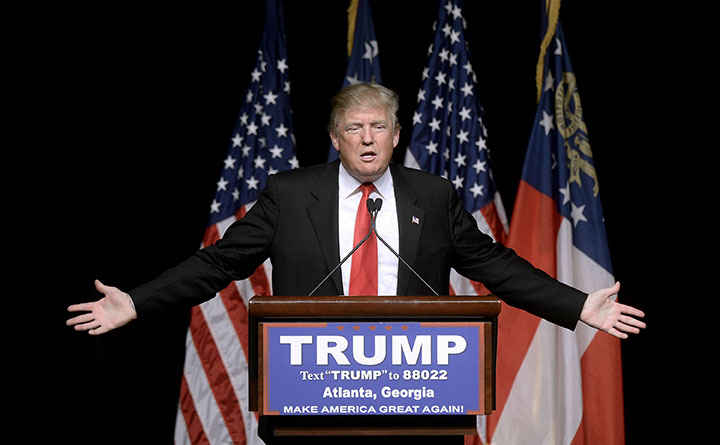The GOP Won All Three Branches—Now What?
Republican presidential candidate Donald Trump speaks during a campaign rally at the Georgia World Congress Center in Atlanta on Sunday, Feb. 21, 2016. (Olivier Douliery/TNS)
On election night, the biggest news was Donald Trump’s victory over Hillary Clinton in the presidential election.
But in perhaps more significant news, the Republicans maintained control over the house AND kept their majority in the Senate. This was an extremely contentious race, and both parties knew that controlling the Senate could be the key; for Democrats, it would be a way to stop a possible Trump presidency from performing too much damage, and for Republicans, it would consequently be a way to stop a possible Clinton presidency from performing too much damage.
The race’s importance was only intensified by the death of Supreme Court Justice Antonin Scalia, meaning that the Senate could shape the balance of the Supreme Court as well.
Because the GOP realized the relatively unexpected possibility of all three branches turning red (the Supreme Court will likely become more conservative under a Republican White House and Congress), the Republicans will have the next two years to enjoy these spoils.
In his first two years, President Barack Obama’s Democratic Party controlled the House and Senate, and he was able to pass a large extent of his platform—most notably the Affordable Care Act, or Obamacare. Now that the GOP can pass laws without having to reach across the political aisle, it can pass most measures that it has eyed for the last six years.
The Congressional Republicans voted to repeal Obamacare many times, at one point the number hit sixty; all of those vetoes with the understanding that they lacked the votes to override the presidential veto.
While the repeal of Obamacare seems inevitable, there is a chance that it will not be fully repealed. That would come if both the Democrats vigorously advocate for the act AND President Trump decides that reform is the only action necessary. It seems more than likely that certain provisions will be repealed.
Even more likely than the repeal of Obamacare would be a pullback on the Iran deal. President-Elect Trump repeatedly referred to the Iran deal is “the worst deal ever negotiated” while campaigning, and he has made it a point that as a businessman and negotiator, he could devise a much better agreement.
Another major event expected in the coming months is the nomination and subsequent confirmation of a conservative justice for the Supreme Court. We can expect to hear names of conservatives like Don Willett and Robert Young come January.
In a year when Washington needs to devise a budget, Congressional Republicans are likely to significantly cut or abolish funding for Planned Parenthood, devote more funding for infrastructure, less for welfare, and more for defense.
There is one near-certainty: far fewer complaints of stagnation and unproductive legislative sessions (at least among Republicans) in the upcoming two years. Just as President Obama was successful in his efforts to enact liberal reform in his first two years, President Trump will likely have the opportunity to pass conservative reform — at least until 2018.
The question remains—will the Democrats rebound in 2018? Democrats tend to fare worse in midterm elections, the Senate map looks difficult, and the GOP has a strong majority in the House. Make no mistake, however: history can repeat itself. The GOP made massive gains in the 2010 Tea Party wave, only two years after the Democratic landslide of 2008.
Ben Feldman is a junior and extremely excited to be an editor of the Banner for the 2016-2017
school year! Ben started writing for the Banner his Sophomore...


